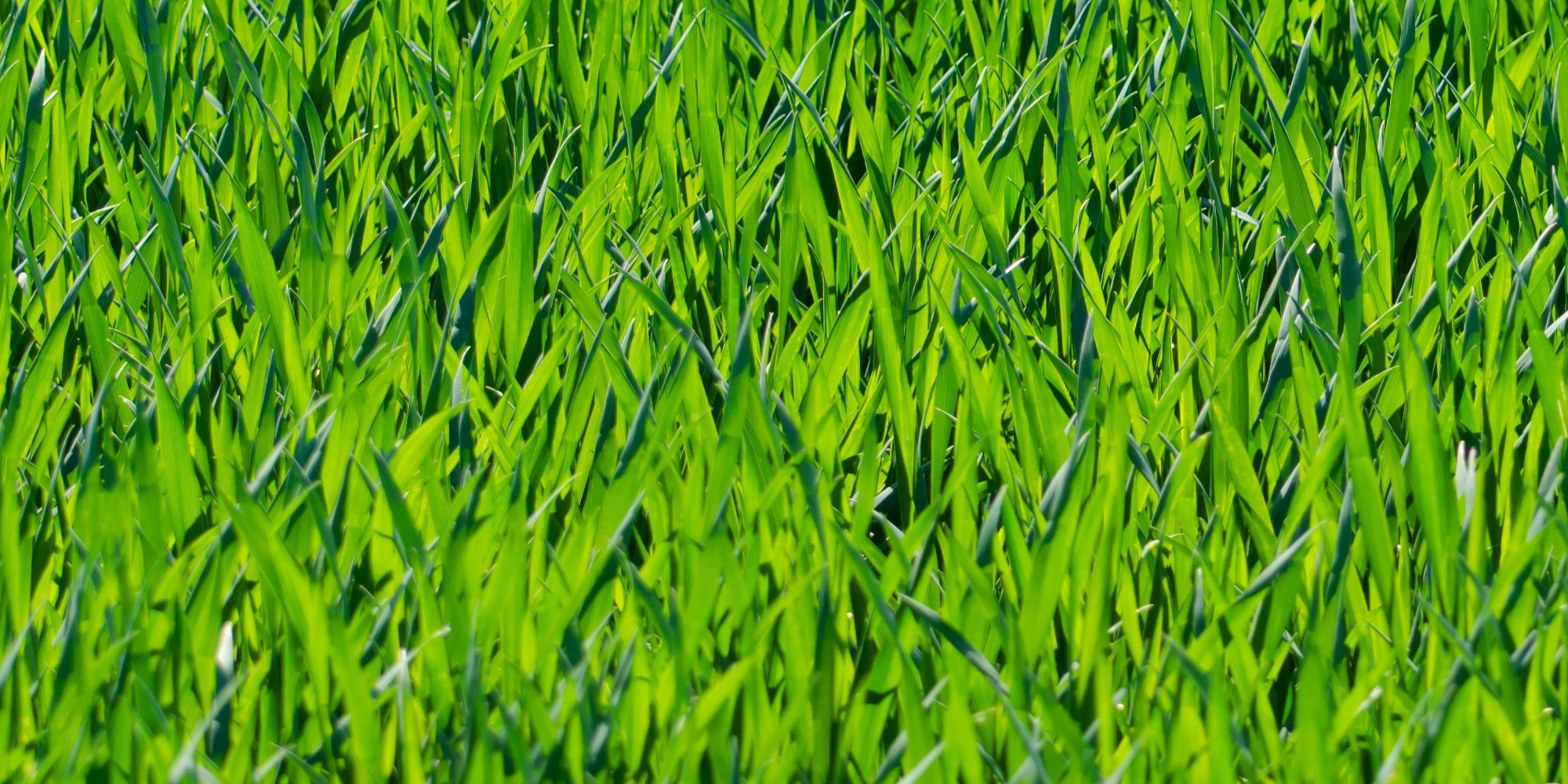It's always nice to have beautiful green lawn, but how do you get the "ultimate" lawn? Read on for our version of the Ultimate Lawn Care Guide.
Everybody has an opinion of lawn care. We've come up with a nice formula that primarily takes into account the health of the lawn. We also try to make it easy to follow, and above all, we tell you why you do each step. So let's get right to the meat and potatoes, shall we?
Step 1:
What: Grass Seed or Corn Gluten Meal
When: Mid to Late April once the ground is no longer soggy
Why: Grass seed thickens lawns while Corn Gluten Meal helps prevent crabgrass. Why not do both? Corn Gluten Meal stops seeds from germinating and it doesn't care if the seeds are grasses, weeds, or anything else so it would just kill your seeds. Corn Gluten Meal is organic and about 80% effective. Remember, you can only prevent crabgrass, not kill it when it's there.
Optional Step: If you have pets and suffer from dog-spots from urine, or have excess moss growing in your lawn, that's a sign of high acidity. Use Lime to counter the high acidity and sweeten the soil. One overall application in the spring and repeated spot-treatments during the year will make the moss and dog-spots a thing of the past, and it's organic.
Step 2:
What: Spring Feeding, we suggest Myke Step 1 Spring Lawn Food
When: Early to Mid-May when the grass is grown and after the first mow
Why: Myke is an OMRI listed organic lawn food priced competitively to many synthetic lawn fertilizers. It's safe for pets and kids, easy to apply, and feeds adequately to green the lawn up very well.
Step 3:
What: Soil Conditioning, Compost, Manure, or Peat Moss (formerly Berger Peat Pellets - no longer available)
When: The end of May before the weather gets too hot
Why: We need some "organic matter" to help feed the lawn. Spread a thin layer on your lawn to help all those wonderful little soil microbes and worms to come back. Remember, top soil is just dirt with under 5% organic matter, we want more than that to condition the lawn.
Step 4:
What: Nematodes
When: Early to Mid June when soil stays a consistent 15 degrees Celsius or more
Why: Nematodes are microscopic worms that seek out and feed on baby grubs. They can't live in temperatures less than 15 degrees Celsius and they can only feed on the every young grubs which hatch in June. Nematodes are preventative and need to be done annually to prevent grub damage.
Make sure to apply Nematodes on a rainy day. Nematodes are killed by sunlight and need water to travel into the soil. You may look like an idiot watering your lawn in the rain, but they work the best this way.
Step 5:
What: Weed Control - hand weeding or vinegar
When: Any hot day from June to August
Why: Weed control is a little more limited than it used to be with the pesticide ban in Ontario. Hand weeding is currently your best solution. You can use Horticultural Vinegar (basically a pickling vinegar strength), but it kills everything so you end up with lots of spots on your lawn.
Step 6:
What: Summer Feeding, Myke Step 2 Summer Lawn Food
When: End of June, beginning of July
Why: Another growth boost focusing less on green growth and more on root development. Again Myke is organic, effective, and pet-safe so it's a great overall fertilizer.
Step 7:
What: Fall Feeding, Myke Step 3 Fall Lawn Food
When: Late August, early September
Why: Once the weather cools a little, lawns need a food designed to harden them off the for winter. Make sure to feed your lawn while the lawn is still growing and not too late.
Step 8:
What: Mow your lawn short
When: Late September until freeze-up
Why: By cutting your lawn shorter and shorter in the fall, you remove excess matter from the lawn that could harbour diseases or insects. It's easy, it's free, and it works. You can't ask for anything better. You can optionally add a little grass seed in September to thicken your lawn, though only if you didn't use Corn Gluten in the spring.
By now, you're thinking that we're talking a lot of work. Eight steps is far more than more Ultimate Lawn Care Guide steps you read in other places. But if you think of it, it's only about 5-6 hours of work overall (excluding the weeding which depends on your lawn), it's just spread out a little more. If you want an even better lawn, you can repeat the Berger Peat Pellets about 2-3 weeks after both the Summer and Fall Myke applications. Top dressing your lawn gives amazing results for very little work.
If you're a traditional lawn junkie used to conventional fertilizer, you may be wondering why we don't suggest it in our Ultimate Lawn Care Guide. Synthetic fertilizers can be good, but too often the "numbers" are taken too literally. We can't survive on just vitamins and minerals alone and neither can your lawn. You need those meat and potatoes in your diet and that's what all the other things are to your lawn.

